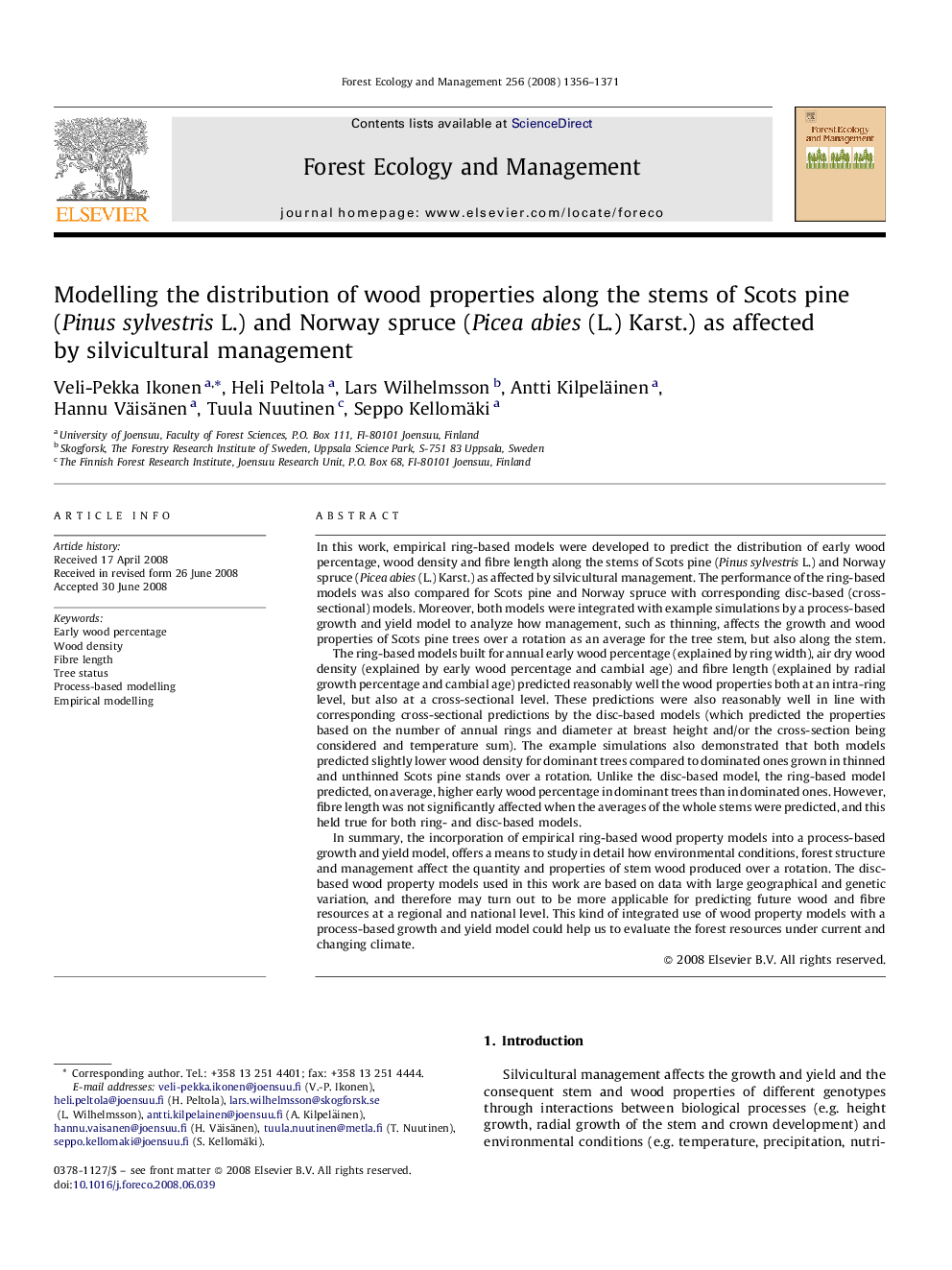| کد مقاله | کد نشریه | سال انتشار | مقاله انگلیسی | نسخه تمام متن |
|---|---|---|---|---|
| 89549 | 159344 | 2008 | 16 صفحه PDF | دانلود رایگان |

In this work, empirical ring-based models were developed to predict the distribution of early wood percentage, wood density and fibre length along the stems of Scots pine (Pinus sylvestris L.) and Norway spruce (Picea abies (L.) Karst.) as affected by silvicultural management. The performance of the ring-based models was also compared for Scots pine and Norway spruce with corresponding disc-based (cross-sectional) models. Moreover, both models were integrated with example simulations by a process-based growth and yield model to analyze how management, such as thinning, affects the growth and wood properties of Scots pine trees over a rotation as an average for the tree stem, but also along the stem.The ring-based models built for annual early wood percentage (explained by ring width), air dry wood density (explained by early wood percentage and cambial age) and fibre length (explained by radial growth percentage and cambial age) predicted reasonably well the wood properties both at an intra-ring level, but also at a cross-sectional level. These predictions were also reasonably well in line with corresponding cross-sectional predictions by the disc-based models (which predicted the properties based on the number of annual rings and diameter at breast height and/or the cross-section being considered and temperature sum). The example simulations also demonstrated that both models predicted slightly lower wood density for dominant trees compared to dominated ones grown in thinned and unthinned Scots pine stands over a rotation. Unlike the disc-based model, the ring-based model predicted, on average, higher early wood percentage in dominant trees than in dominated ones. However, fibre length was not significantly affected when the averages of the whole stems were predicted, and this held true for both ring- and disc-based models.In summary, the incorporation of empirical ring-based wood property models into a process-based growth and yield model, offers a means to study in detail how environmental conditions, forest structure and management affect the quantity and properties of stem wood produced over a rotation. The disc-based wood property models used in this work are based on data with large geographical and genetic variation, and therefore may turn out to be more applicable for predicting future wood and fibre resources at a regional and national level. This kind of integrated use of wood property models with a process-based growth and yield model could help us to evaluate the forest resources under current and changing climate.
Journal: Forest Ecology and Management - Volume 256, Issue 6, 5 September 2008, Pages 1356–1371